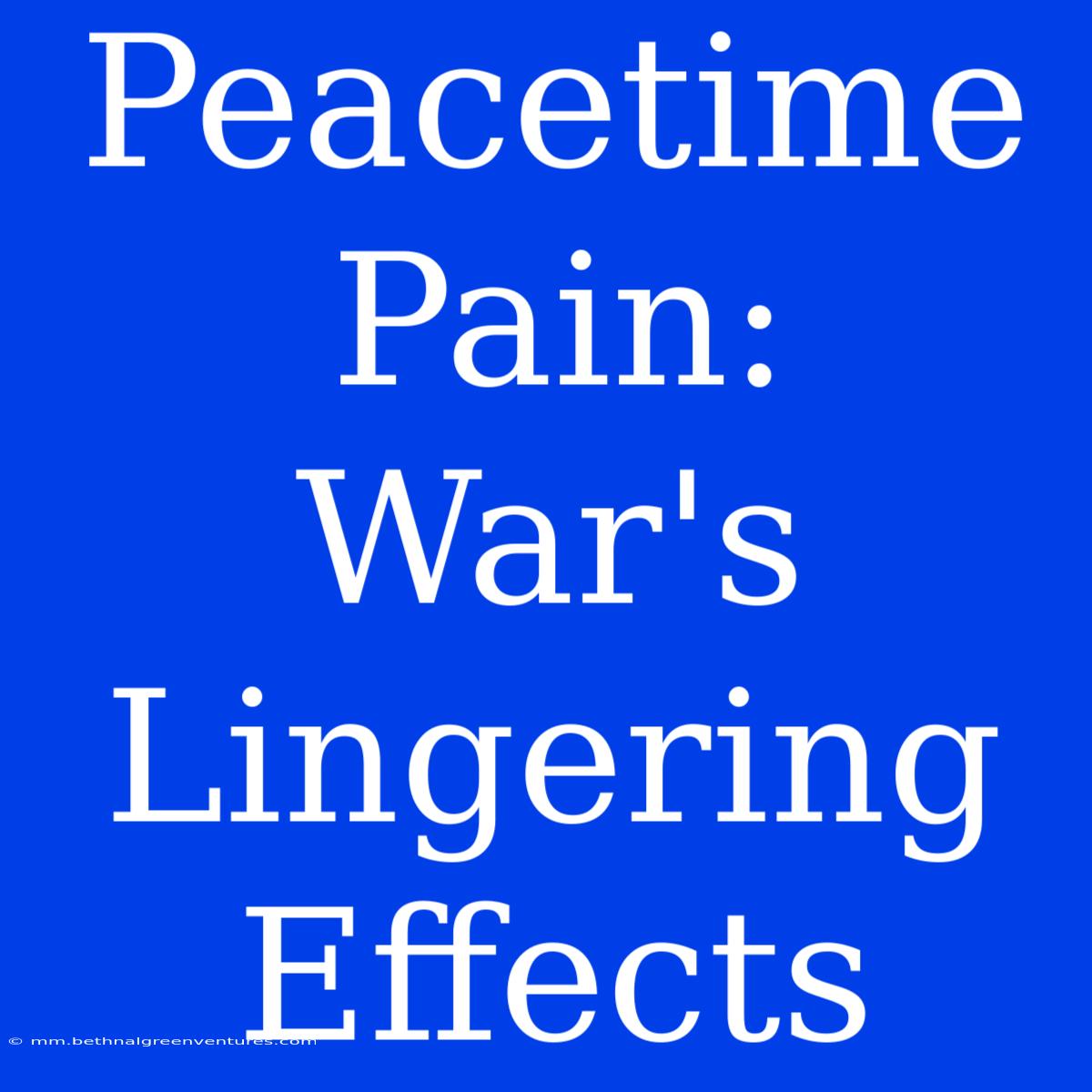Peacetime Pain: War's Lingering Effects
Can peace truly heal the wounds of war? War's lingering effects, even after the guns fall silent, continue to shape societies and individuals for generations to come. Understanding these profound impacts is crucial for fostering lasting peace and helping those affected to find healing.
Editor Note: This article explores the multifaceted consequences of war, highlighting the ongoing pain and challenges that persist long after conflict ends. It underscores the importance of addressing these lingering effects to build a more just and resilient world.
War's impact reaches far beyond the battlefield. It disrupts lives, economies, and social fabrics, leaving behind a trail of physical and psychological trauma, displacement, and social unrest. The scars of conflict are deeply ingrained in individuals, communities, and entire nations, demanding a comprehensive approach to peacebuilding and healing.
This analysis delves into the complex web of peacetime pain:
| Aspect | Description |
|---|---|
| Physical Trauma | Injuries, disabilities, and chronic illnesses sustained during conflict. |
| Psychological Trauma | Post-traumatic stress disorder (PTSD), anxiety, depression, and other mental health challenges. |
| Displacement and Refugee Crises | Forced migration due to violence, persecution, and environmental degradation. |
| Economic Disruption | Damage to infrastructure, loss of livelihoods, and economic instability. |
| Social and Political Instability | Increased crime, violence, and social unrest, as well as the breakdown of social structures. |
| Intergenerational Trauma | The transmission of psychological and emotional wounds from one generation to the next. |
Peacetime Pain
Physical Trauma:
The visible wounds of war are often the most immediate and striking. Injuries, disabilities, and chronic illnesses sustained during conflict can have lifelong consequences for individuals and their families. Access to healthcare, rehabilitation, and assistive devices can be limited, particularly in post-conflict settings. These physical challenges can lead to social isolation, economic marginalization, and a diminished quality of life.
Psychological Trauma:
The psychological scars of war are often invisible but equally debilitating. PTSD, anxiety, depression, and other mental health challenges are common among veterans, refugees, and civilians affected by conflict. These conditions can impair cognitive function, social relationships, and overall well-being, leading to substance abuse, self-harm, and even suicide.
Displacement and Refugee Crises:
War often forces people to flee their homes, seeking refuge in neighboring countries or within their own nations. These displacement crises create immense hardship, as refugees face challenges with access to food, shelter, healthcare, education, and legal status. The social and psychological impacts of displacement can be profound, leading to feelings of isolation, vulnerability, and loss of identity.
Economic Disruption:
War wreaks havoc on economies, leaving behind a trail of destruction and instability. Damage to infrastructure, loss of livelihoods, and economic instability can hinder economic development and create a cycle of poverty and hardship. The lack of access to essential goods and services can exacerbate existing inequalities and create new ones.
Social and Political Instability:
War can erode social cohesion and undermine political institutions, leading to increased crime, violence, and social unrest. The breakdown of social structures can create a climate of fear and mistrust, making it difficult to rebuild communities and achieve sustainable peace. The potential for further conflict remains a significant threat in post-conflict societies.
Intergenerational Trauma:
The trauma of war can be passed down through generations, impacting the physical and mental health of families long after the conflict has ended. Children who witness or experience violence may suffer from PTSD, anxiety, and other mental health challenges. They may also be more likely to engage in risky behaviors or experience difficulties in school and relationships.
Addressing the Legacy of War:
Addressing the lingering effects of war requires a comprehensive approach that combines physical and psychological healing with economic development, social reconciliation, and justice. Investing in healthcare, education, and social services is crucial to support the well-being of individuals and communities.
Addressing the root causes of conflict, promoting social justice, and strengthening institutions are essential for building a more peaceful and sustainable future. Peacebuilding efforts must be inclusive and participatory, ensuring that the voices and needs of all affected communities are heard and respected.
Conclusion:
The scars of war extend far beyond the battlefield, leaving behind a legacy of pain and hardship that can last for generations. Healing the wounds of war requires a long-term commitment to addressing the physical, psychological, social, and economic impacts of conflict. By understanding the multifaceted consequences of war, we can better support those affected and work towards a more just and peaceful world.
